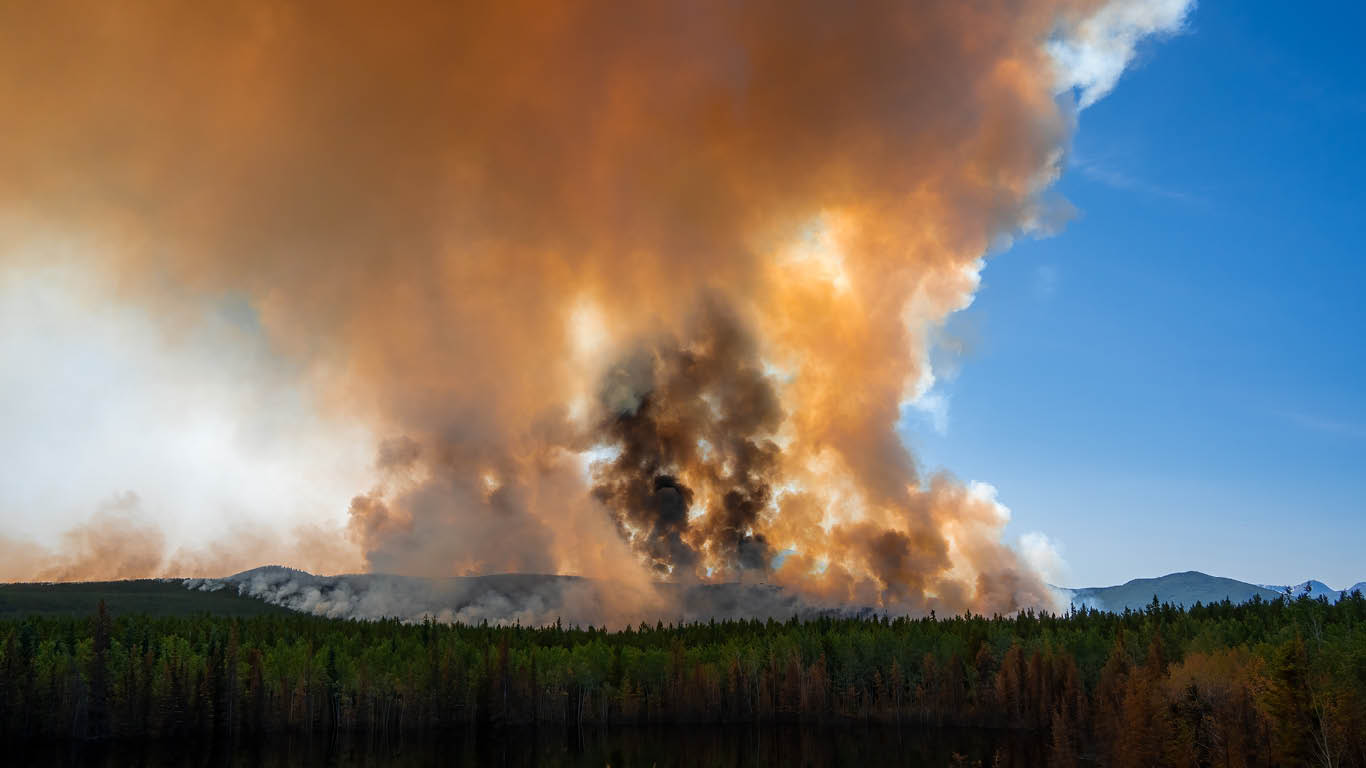
Weather-related catastrophic events once again plagued Canada in 2024. Let’s take a look at the price Canadians have paid and continue to pay for these weather-related catastrophes.
A summer of wildfires, hail and floods
In July, torrential rain in Toronto turned some roads into rivers and flooded basements, causing an estimated $940 million in damage. During the same month, a wildfire caused by a lightning strike destroyed or damaged almost one-third of the buildings in Jasper, causing a further $880 million in damage.
In August, Calgary was walloped by a massive hailstorm resulting in $2.8 billion in damages, while Quebec was struck by the remnants of Hurricane Debby, leading to a record high $2.5 billion payout, surpassing the 1998 Ice Storm as the most expensive weather-related disaster in the province’s history.
The year 2024 is already the costliest in terms of catastrophic weather-related insurance payouts, surpassing the 2016 Fort McMurray wildfire, and the year is not yet over.
The high human cost of weather-related catastrophes
Tragically, one life was lost during the four largest weather catastrophes this summer, and countless more lives were forever changed. In Jasper, approximately one-third of the town’s structures were damaged or destroyed by the wildfire, making many families homeless.
Canadians bear the cost of climate change through higher insurance premiums
Inflation has eased over the past year, with the Consumer Price Index (CPI) up 2.0% year over year in August 2024.
The increase of homeowners’ home and mortgage insurance costs, however, outpaced the all-items CPI, increasing 7.8% year-over-year nationally in August, with prices in Alberta and Ontario rising by over 10% year over year.
Extreme weather brought on by climate change is increasing in frequency and severity, costing households and insurers more.
Recent report does deep dive into the costs of weather-related events on Canadian consumers and insurance companies
A recent study looked at the impacts of extreme weather trends and catastrophic claims on the property and casualty insurance industry’s financial performance, specifically the personal property insurance line of business, which is synonymous with homeowners’ insurance.
The cost of weather-related disasters is rising. From 1983 to 2008, insurers averaged $400 million yearly in catastrophic weather event payouts, and since 2009, the yearly average has risen to nearly $2 billion.
In 2022, there were 15 catastrophic weather events in Canada, with claims ranging from $35 million to $1 billion, totalling $3.4 billion in insured losses. These losses were mainly attributable to water-related damages.
In 2023, damages from extreme weather events totalled $3.1 billion.
Both 2022 and 2023 ranked within the top 10 all time in terms of weather-related damage.
An important metric for insurance companies is the claims (loss) ratio; that is, the amount of money an insurance company collects in premiums minus the amount of money spent paying out claims. If this ratio is greater than 100%, the company is not profitable in terms of underwriting alone.
The claims (loss) ratio was negatively impacted from 2020 to 2023, where both insurers and consumers were affected through higher reinsurance and higher homeowners’ insurance premiums, made worse by supply chain issues during the pandemic that made rebuilding more difficult and costly.
Reinsurance rates trend upward, significantly impacted by extreme weather claims
In a broad sense, reinsurance is effectively insurance for insurance companies. They reinsure a portion of their portfolios to offset or transfer risk to another party. Insurers are heavily reliant on the ability to transfer risk, especially for smaller insurers, and more so as extreme weather increases.
In 2023, reinsurance renewal rates were up significantly, in many cases as much as 25% to 70% higher, largely because of the catastrophic weather events in 2022.
In Canada, 1 in 10 households are highly exposed to flooding
Flooding is the most common weather-related catastrophe in Canada and most insurers now offer overland water coverage, although most consumers do not opt into the additional coverage. This means they would not be covered in the event of overland flooding from a storm or water seepage into their home.
In 2020, approximately 1.5 million households or 10% of all households in Canada were highly exposed to flooding.
One in five Canadians extremely or very concerned about weather-related emergencies or natural disasters
We asked Canadians to share their level of concern about the risk of natural disasters and weather-related emergencies in the fall of 2022 through our Canadian Social Survey.

StatsCAN App
Download the StatsCAN app today to have these articles at your fingertips! Already using the app? Leave a review in the App Store and Google Play and let us know what you think.
Contact information
For more information, contact the Statistical Information Service (toll-free 1-800-263-1136; 514-283-8300; infostats@statcan.gc.ca) or Media Relations (statcan.mediahotline-ligneinfomedias.statcan@statcan.gc.ca).
